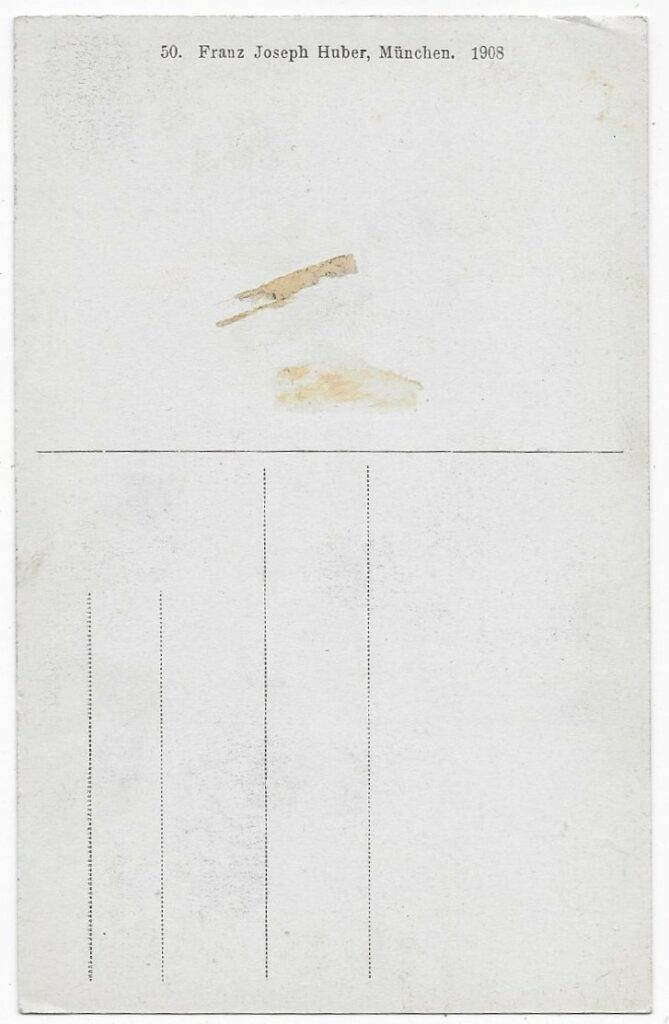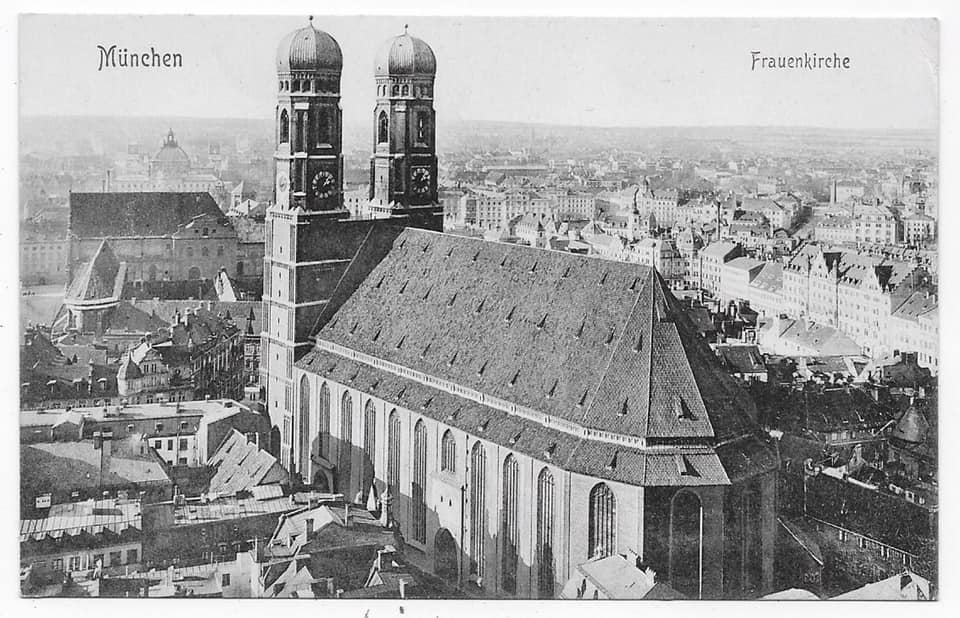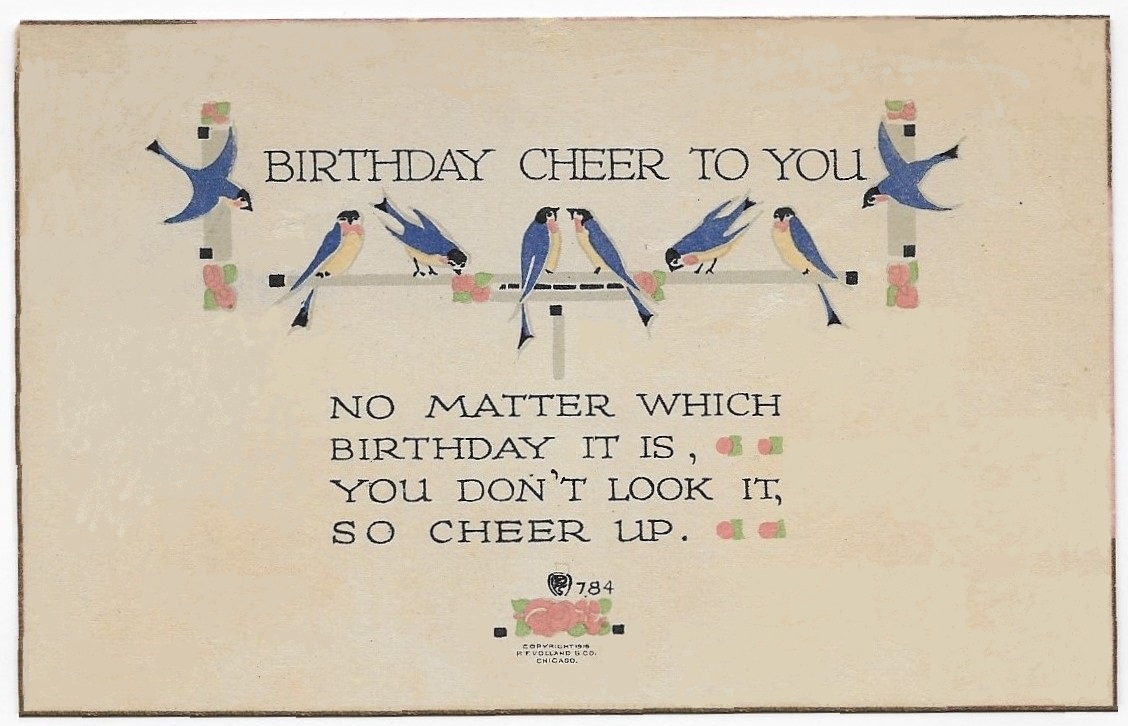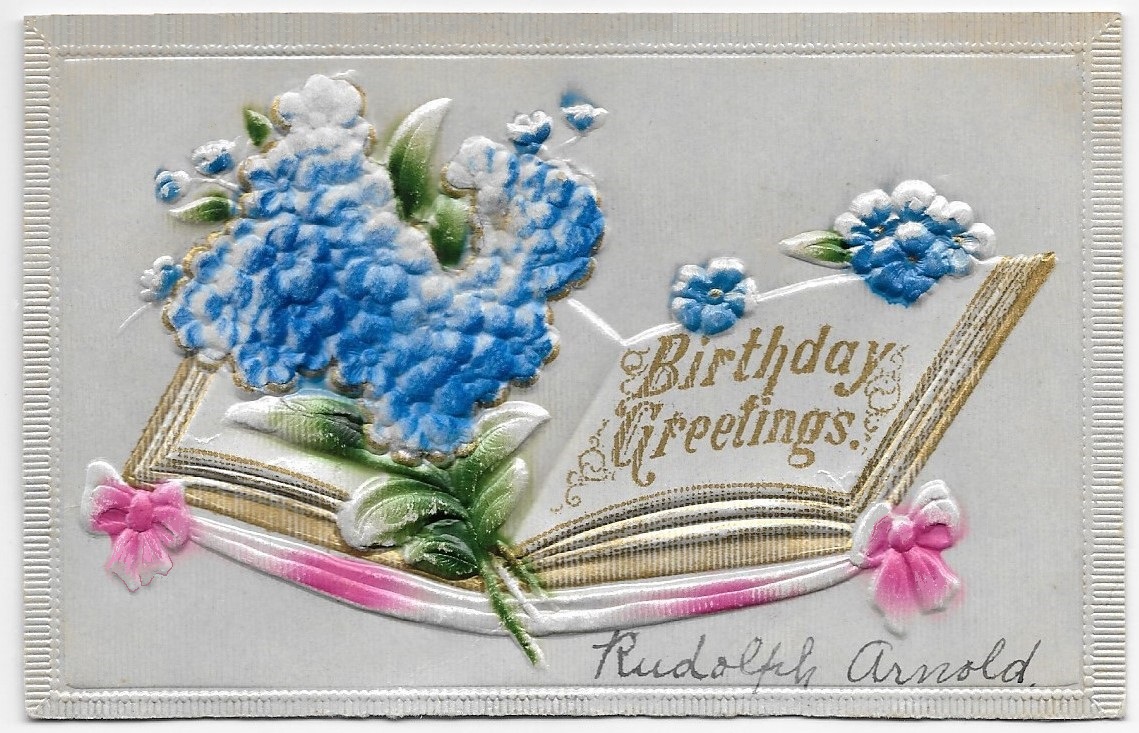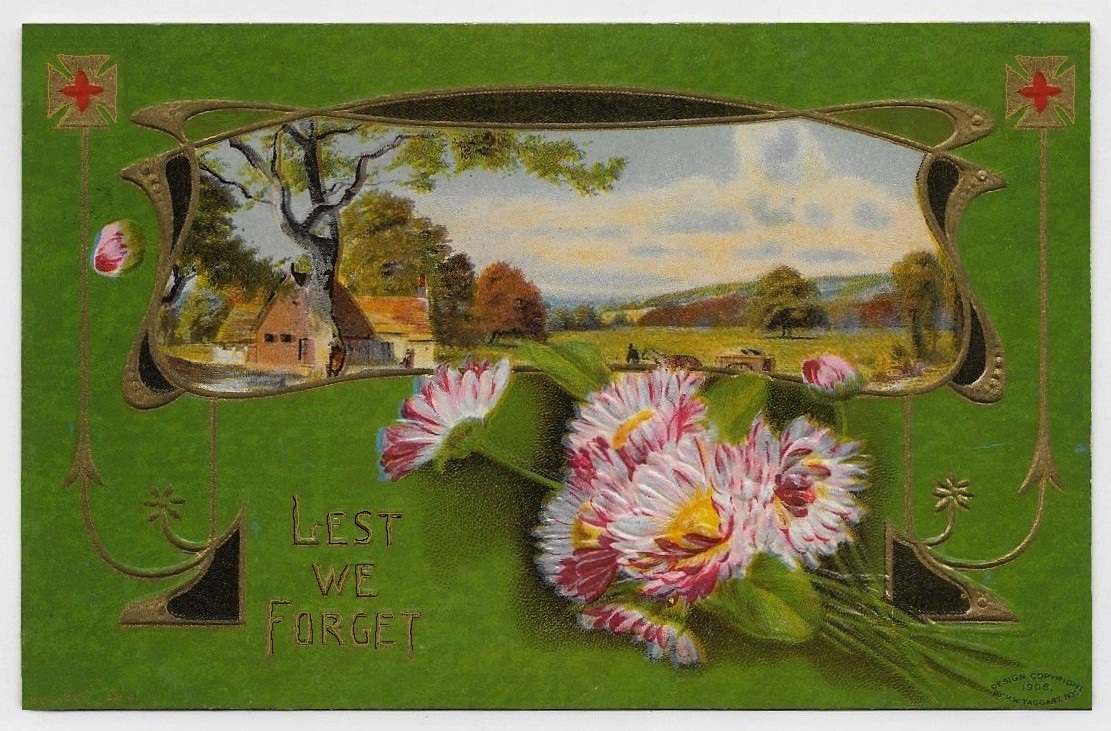The Frauenkirche of Munich – circa 1908
For this Sunday, a postcard photo of an unusual European church that I visited many years ago.
In the late fifteenth century, the Bavarian capital of Munich was not a large city, the population was about 13,000..
By contrast, London had a population close to 50,000 and other cities in Germany were larger than Munich – Cologne at 45,000, Nuremberg at 38,000, Augsburg at 30,000.
Munich already had a cathedral church, dating from the 13th century, but the citizens were ambitious for a new city landmark.
Because there were no suitable stone quarries in the region, the new church was constructed of brick.
Plans to erect lofty spires on the towers were abandoned due to cost, and the towers were capped with small domes in a Byzantine style.
The appearance of the completed church was unique to European cities, and height restrictions on buildings in Munich (which still exist) enabled the church to be visible for miles around.
Dedicated to the Virgin (the full name is, literally, “our dear Lady”), the church had a capacity of 20,000 standing persons – far more than the city’s entire population.
Clearly, the work was a labor of love and ambition, not of practicality. Financial constraints repeatedly forced changes in the design.
Some church furniture was added later in the 16th century, so when I attended Mass on a bright Sunday morning in 1977, one had a bench on which to sit.
The church was heavily damaged in World War II, the roof and one of the towers collapsed entirely.
The original adornments of the nave and the chapels were lost.
Paradoxically, the rebuilt church, constructed to the original plan but without adornment, is considered to be one of the most appealing interiors of our time.
The church is enormous, and the buttresses are within the interior, instead of “flying” on the exterior.
The lack of ornamentation makes the large pillars soar upward into a vast white space.
The original market square was also rebuilt after the war, and it is a lovely place to loiter or take refreshment on a Sunday afternoon.
One hopes that all the destruction of war could be remade into something of beauty and loveliness as this church is.
This postcard was printed in Munich in 1908 by Franz Joseph Huber.
As I am a descendent of Hubers (who were among the first European settlers in Lancaster County), I am claiming the Bavarian publisher as a distant relative.
